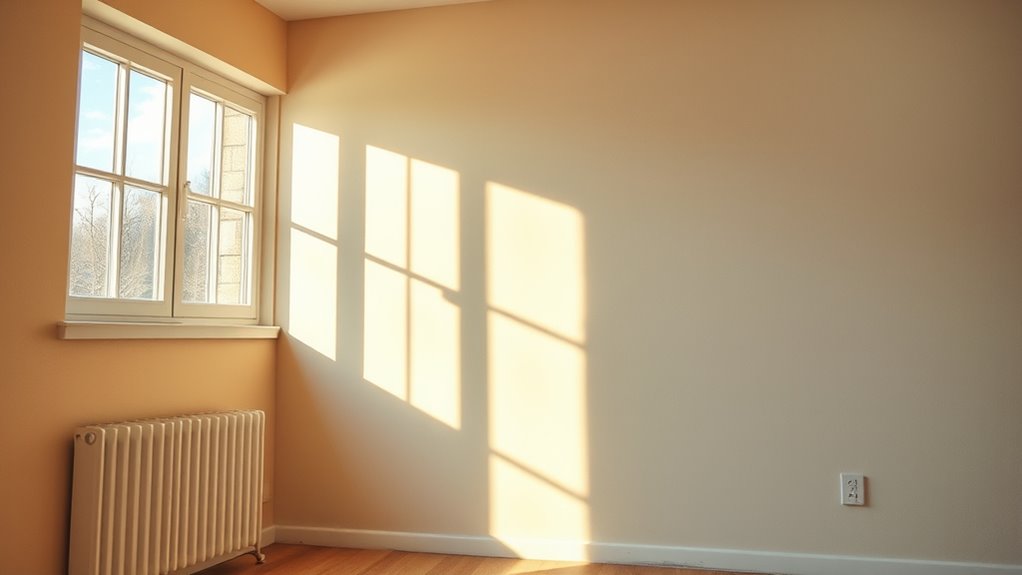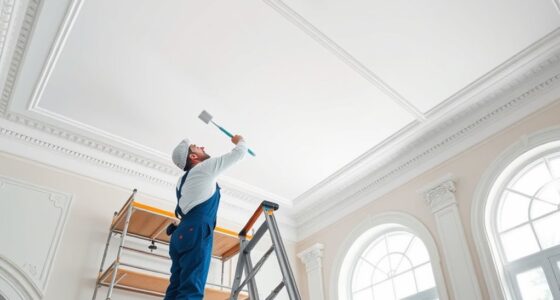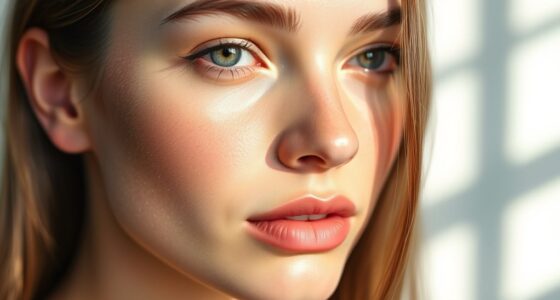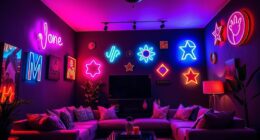When choosing colors by light, consider both Light Reflectance Value (LRV) and undertones. Higher LRV makes colors brighter and more reflective, creating open, airy spaces, while lower LRV adds coziness with darker shades. Undertones subtly influence how colors look under different lighting, so testing samples in various conditions helps you see their true appearance. If you keep exploring, you’ll discover how balancing LRV and undertones creates a harmonious, lasting color palette.
Key Takeaways
- Higher LRV reflects more light, making colors appear brighter and more open, ideal for enhancing natural light.
- Undertones subtly shift how a color looks under different lighting conditions, affecting overall harmony.
- Testing samples in various lighting helps reveal true color and undertone behavior throughout the day.
- Balancing LRV and undertones ensures a color feels consistent and inviting across changing light conditions.
- Understanding how light interacts with LRV and undertones aids in selecting durable, visually appealing paint colors.
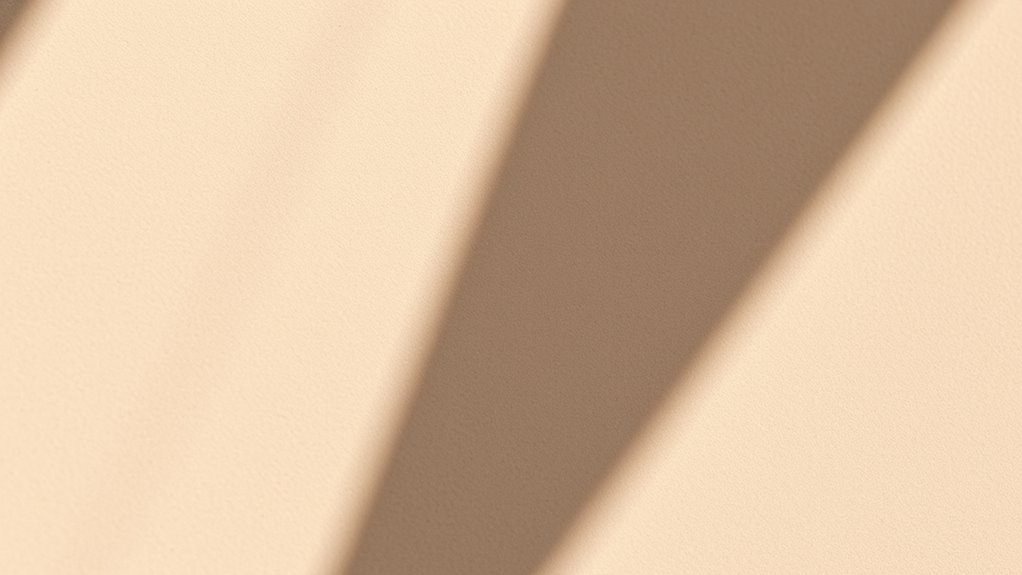
Ever wondered how to choose the perfect paint color? It’s more than just picking a shade you like—it’s about understanding how light interacts with that color and how it will look in your space. One of the key factors to consider is the Light Reflectance Value (LRV), which measures how much light a paint color reflects. A higher LRV means the color is lighter and bounces more light around the room, making spaces feel brighter and more open. Conversely, a lower LRV indicates a darker color that absorbs more light, creating a cozy or dramatic atmosphere. When selecting a paint color, keep in mind that the LRV directly influences how the color appears during different times of day and under various lighting conditions. This is essential for achieving color palette harmony, ensuring your chosen hues complement each other and the room’s lighting. Understanding the relationship between light and color also impacts paint durability. Light exposure can cause certain shades to fade or change over time, especially in rooms with intense sunlight. Choosing colors with appropriate LRV levels and undertones can help maintain their vibrancy longer, ensuring your walls look fresh for years. It’s worth investing time in sample swatches and observing them at different times of day. This process helps you find a balance where your color choices are not only visually appealing but also durable in the long run. Recognizing how color perception varies with different lighting conditions further supports making informed decisions. Ultimately, selecting the right paint involves considering the LRV and undertones to create a harmonious and lasting finish. When you understand how light influences color and how undertones subtly shift the hue, you’re empowered to make smarter choices. This approach ensures your room will feel balanced, inviting, and true to your vision, regardless of lighting conditions. So, take your time, test thoroughly, and let light guide your color decisions for a space that’s both beautiful and resilient.
Frequently Asked Questions
How Does Natural Light Affect Color Perception Indoors?
Natural light considerably impacts your color perception indoors by making colors appear more vibrant and true to life. As daylight varies throughout the day, it can shift how you see hues, making warm tones warmer and cool tones cooler. You might notice that a color looks different in the morning compared to late afternoon. Understanding this helps you choose colors that look great under your specific natural light conditions.
Can LRV Help in Choosing Paint for Small Rooms?
Ever wonder how to make a small room feel larger? LRV helps you choose the right paint finish and color matching to brighten your space. Higher LRV shades reflect more light, creating an airy, open feel, perfect for small rooms. Opt for paints with a matte or satin finish to enhance the effect. By considering LRV, you can pick colors that maximize light and make your space appear bigger and more inviting.
Do Undertones Vary With Different Lighting Fixtures?
Yes, undertones can vary with different lighting fixtures. When you change lighting, it affects lighting consistency and can influence how colors appear, making undertones seem different. To guarantee accurate color matching, you should test paint samples under various lighting conditions. This way, you can see how the undertones shift and choose a color that looks great in your space’s specific lighting, avoiding surprises later.
How to Identify Subtle Undertones in Existing Paint?
To identify subtle undertones in existing paint, start with undertone detection by observing the color in different lighting conditions. Use color swatch analysis by comparing the room’s paint with nearby fabric or decor in similar shades. Look for hints of color, like a greenish or pinkish hue, that reveal the undertone. This method helps you accurately determine the underlying tones, even when they’re faint or tricky to spot.
Is LRV Relevant for Outdoor Color Selection?
Think of LRV as your paint’s battle armor against outdoor lighting and UV exposure. Yes, it’s pertinent because it helps you understand how much light the color reflects, which affects its durability and appearance outside. When choosing outdoor colors, consider LRV to guarantee your paint withstands harsh sunlight and weather. This way, your color stays vibrant and true, resisting fading under the sun’s relentless rays.
Conclusion
Think of choosing colors like steering a boat through shifting waters. Your LRV acts as the compass, guiding you through the light’s reflection, while undertones are the currents beneath, subtly influencing your course. By understanding both, you navigate confidently, avoiding rocky surprises and finding the perfect hue that feels just right. With this knowledge, you become the captain of your space, steering toward harmony and balance in every shade you select.
